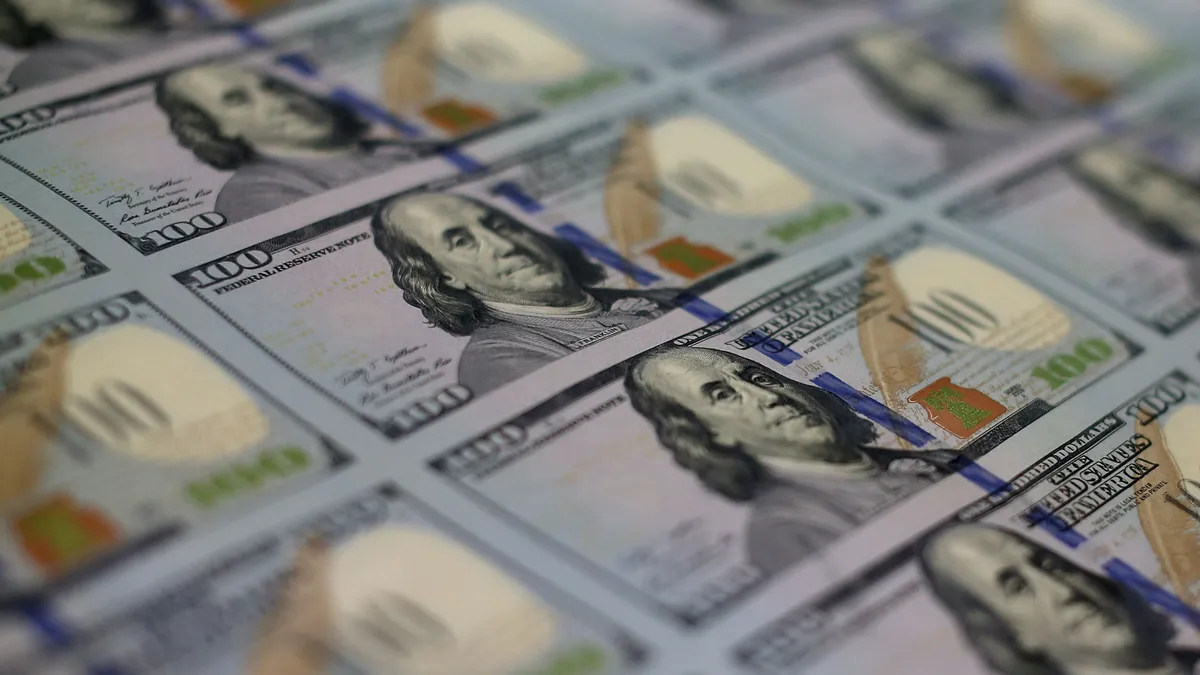Dive Brief:
- The consumer price index rose more than forecast last month, affirming the caution among Federal Reserve policymakers who want to see more evidence of easing price pressures before cutting the main interest rate from a 23-year high.
- Core CPI, which excludes volatile food and energy prices, increased 0.4% last month from January and 3.2% on an annual basis, well above the Fed’s 2% target. Services prices, which shift more slowly than other inflation components, gained 0.5% during February and 5.2% over 12 months, with a 0.4% monthly increase in shelter costs the biggest driver of services inflation, the Department of Labor said Tuesday.
- “Inflation remains unusually high,” Jason Furman, chair of the Council of Economic Advisers in the Obama administration, said on X, noting that core CPI during the past three months rose at a 4.2% annual rate. “Shelter continues to drive inflation up,” according to Furman, an economics professor at Harvard University. “It moderated from its extreme pace in January, which was a widely understood quirk, but is not moderating to nearly the extent the optimists had hoped.”
Dive Insight:
Fed policymakers have slowed inflation from a 40-year high but have refrained from declaring sufficient progress in reducing price pressures, pushing back by several weeks market expectations for a cut in the federal funds rate from its current range between 5.25% and 5.5%.
Traders in interest rate futures on Tuesday set 11% odds that the Fed will cut the main rate by at least a quarter point on May 1, down from a 52% probability a month ago, according to the CME FedWatch Tool. They see 70% odds that the benchmark rate will be at least a quarter point lower after a two-day monetary policy meeting on June 12.
Fed Chair Jerome Powell said in congressional testimony on March 6 that policymakers believe cutting the federal funds rate will likely be appropriate this year as long as they see more evidence that inflation is cooling.
“We want to see a little bit more data so that we can become confident,” Powell told the House Financial Services Committee. “We’re not looking for better inflation readings than we’ve had. We’re just looking for more of them.”
The Fed chair signaled that inflation data need not “be better, just good,” Julia Coronado, president of MacroPolicy Perspectives, said on X, formerly Twitter. Referring to a decline in price pressures during the first half of 2023, Coronado said, “we now need to verify the spring moderation repeats, and we are a ‘Go’ on cuts.”
Yet news on inflation has been worse than forecast. The increase in core CPI in February outran expectations for the second consecutive month.
Also, the core personal consumption expenditures price index — the inflation gauge most closely tracked by the central bank — rose 0.4% in January in the biggest gain in 11 months, the Commerce Department reported on Feb. 29. In December it increased just 0.1% on a month-to-month basis.
“If everything continues the way it is now, I do not expect the Fed to trim rates in the foreseeable future,” Aleksandar Tomic, director of the graduate programs in applied economics and applied analytics at Boston College, said in an email response to questions.
“I think that if the Fed did trim rates, we would see a resurgence in inflation,” he said. Referring to the Fed’s challenge of reducing inflation all the way to 2%, Tomic said, “the ‘last mile’ will be very tricky.”
In another negative sign for policymakers, consumers last month on average expected 2.7% annual inflation during the next three years compared with 2.4% in January, the New York Fed reported Monday. For the five-year time horizon, consumer inflation expectations rose last month to 2.9% from 2.5% the prior month.
Fed officials have said that achieving their 2% target for price gains partly hinges on maintaining low inflation expectations.












